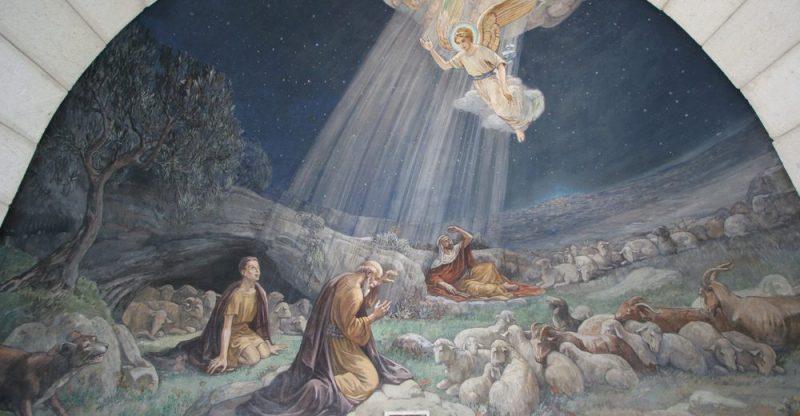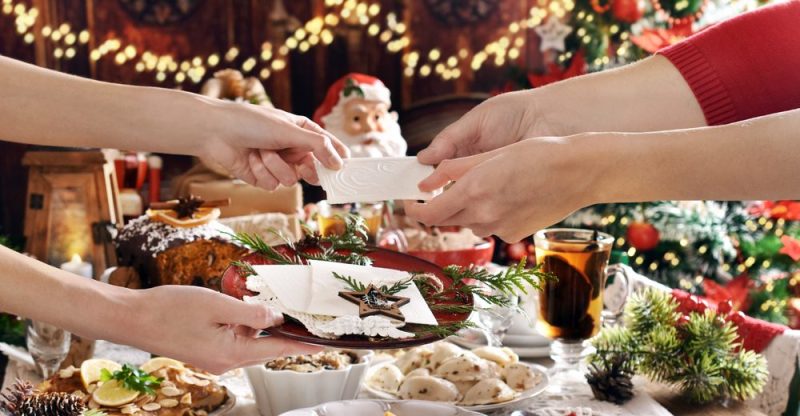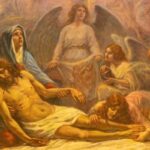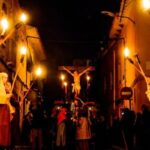We explain what Christmas is and the origin of this celebration. Also, some of its traditions and how it is celebrated in various countries.

What is Christmas?
Christmas is a Christian holiday that commemorates the birth of Jesus Christ. It is celebrated on December 25, except in the Russian Orthodox Church and other Eastern churches that are governed by the Julian calendar, in which it is celebrated on January 7 (corresponding to December 25 in the Gregorian calendar).
the word Christmas It comes from the Latin nativitas, 'birth'. The French have the same origin Noelthe Italian Natale and the Portuguese Native. In English, the holiday is called Christmas (Mass of Christ's day'day of Christ's mass'). In German it is called Weihnachten'holy night'.
Despite being a Christian holiday, Christmas is currently celebrated in much of the world also by non-Christians, devoid of its religious content, as an occasion for reunion and reconciliation between family and close friends.
See also: Birth
Origin of Christmas

According to the Gospels of Matthew and Luke, Jesus, considered the Messiah announced by the prophets in the Old Testament, was born in the village of Bethlehem, during the reign of Herod the Great, vassal king of Rome (Mt 2,1; Lk 1, 5 and 2, 6-7).
Luke points out that Jesus' parents, Mary and Joseph, moved to Bethlehem from Nazareth to register, in compliance with a decree of Emperor Augustus (Lk 2, 1-6). This evangelist also mentions that Jesus was born in a manger “because there was no room in the inn” (Luke 2:7) and that an angel announced his birth to some shepherds, who were the first to go to the manger to worship him (Luke 2 , 8-20).
The Gospels do not specify the date on which Jesus was born nor do they give any indications about it. The first mention of December 25 as the day of Jesus' birth is found in a text by the Hellenist and apologist Sextus Julius Africanus, from the year 221.
Among the reasons why that date could have been established, the need for the Church to replace the pagan festival of the dies solis invicti nati ('day of the birth of the unconquered god'), in which the winter solstice was celebrated as the day of the birth of the Sun, in order to facilitate the acceptance of Christianity.
Liturgical celebration of Christmas
The celebration of Christmas was firmly established from the 4th century onwards. However, it was not until the 9th century that the Catholic Church adopted a specific liturgy for that holiday. This traditionally includes the celebration of four masses: the vigil Mass (Misa de Gallo), the midnight Mass, the dawn or dawn Mass and the daytime Mass.
In the liturgical calendar, Christmas is preceded by the four weeks of the season of Advent, the period of penitence and preparation for Christmas. The celebration of Christmas marks the beginning of the Christmas season, which runs from December 25 until the feast of the Baptism of the Lord (between January 9 and 13, depending on the year). Outside the Catholic Church, Christmas time lasts 12 days, from December 25 to January 5.
Christmas traditions

Christmas is associated with several traditions. Some of them are currently almost universal in scope.
- The Christmas tree. The origins of the Christmas tree date back to the ancient Scandinavian and Germanic peoples. These, as part of the celebration of the birth of the god Frey, decorated an evergreen tree. Saint Boniface (672-754), evangelizer of Germany, is attributed to having adapted this custom to Christianity. The tree, a pine or fir, thus became a symbol of the birth of Jesus. From northern Europe, this tradition spread to the rest of the world. In Catholic homes, the tree is prepared on December 8, the day on which the feast of the Immaculate Conception of the Virgin is celebrated.
- The manger. Cribs, also called nativity scenes or nativity scenes, were popularized by Saint Francis of Assisi. On Christmas Eve 1223, this saint set up a manger with real people and animals in a cave outside the village of Greccio, Italy. In Catholic homes, the manger is set up on December 8, along with the Christmas tree.
- Santa Claus. The figure of this character, also known as Santa Claus, San Nicolás and, in Chile, as Viejito Pascuero, comes from the legend around San Nicolás de Bari, a 4th century bishop who lived in Turkey and who is said to have He threw money down a chimney to a father who could not marry his three unmarried daughters because he lacked a dowry. The Dutch, who founded New Amsterdam (present-day New York), are credited with bringing the figure of Santa Claus to America, along with the custom of giving gifts.
- Advent wreath. The Advent wreath, made up of a wreath of pine or fir branches and four candles, represents the wait and preparation for Christmas, during the four weeks that precede it. Each candle symbolizes an Advent Sunday. Like other Christian traditions, this one has its origins in pagan traditions; in this case, from the Germanic peoples, who made wreaths of green branches and lit candles to represent the fire of the Sun god and the hope of the coming of spring.
- The carols. These popular Christmas songs were originally, in the 13th century, compositions of secular themes. Starting in the 16th century, the Church began to promote Christmas carols with religious themes, so that they could be sung during processions and other religious celebrations. Among these festivities, Christmas, due to the joy with which it is associated, was the one with the greatest diffusion. The equivalent of the carol in England is the Carol.
- Christmas Eve dinner. During Christmas Eve it is common in many places for families to get together to share a hearty dinner. The dishes vary from one country to another, according to the cuisine of each place. When midnight arrives, a toast is made. In many countries, gifts are exchanged, placed next to the tree. In other countries, gifts are opened on the morning of the 25th.
Christmas in some countries

In addition to the customs that are experienced around the world, each country has its own Christmas traditions.
- In Mexico, between December 16 and 24, the tours known as posadas take place. For 9 days, children and adults, remembering the search for Mary and Joseph in Bethlehem, go out into the streets and visit nine houses, until they find the house where they can stay. The outings are accompanied by songs and prayers. The host receives the pilgrims with punch, fruits and the aguinaldo or collation, a small bag with sweets and peanuts. At the end, a piñata with seven peaks breaks, symbolizing the 7 deadly sins.
- In Poland, the Christmas celebration begins on the eve with the appearance of the first star in the sky. At the table where dinner is held, a little straw is placed under the tablecloth, as a reminder that Jesus was born in a manger. In many homes, twelve dishes are served, one for each apostle, and an extra place is symbolically left on the table for the baby Jesus or an unexpected visitor. Before starting dinner, diners share the oplatek, an unconsecrated host, and eat it, as a symbol of reconciliation.
- In Finland, the Christmas Declaration of Peace ceremony is held on Christmas Eve. In the city of Turku (former capital of Finland) a text is read declaring the “general Christmas peace” and wishing everyone a peaceful and happy Christmas. Christmas preparation includes a thorough cleaning of the home and a sauna session. Then, the Finns dress in clean clothes for dinner. After dinner, Santa Claus, called Joulupukki, visits the houses, sometimes accompanied by an elf.
- In Ukraine, Christmas is celebrated on two dates: December 25, for Catholics and Protestants, and January 7, for Orthodox. Among the ornaments with which Christmas trees are decorated are some in the shape of cobwebs, in which an artificial spider is placed, following a legend about a poor woman who decorated her tree in that way, and then saw how the cobwebs They became silver threads. Christmas Eve dinner is known as holy dinner. In it, 12 dishes are served, one for each apostle. During the meal, people talk in a low voice. In addition, as on other special occasions, portraits of deceased relatives are placed next to the table or in another visible place and, next to them, a little bread and salt, a glass of brandy and a lit candle.
Continue with: Holy Week
References
- “Christmas”, in Encyclopedia Britannica.
- “How Christmas has evolved over centuries”, in National Geographic.
- “Christmas”, in online Catholic Encyclopedia.
- “Christmas, a celebration that unites”, at UNAM-General Directorate of Social Communication.





